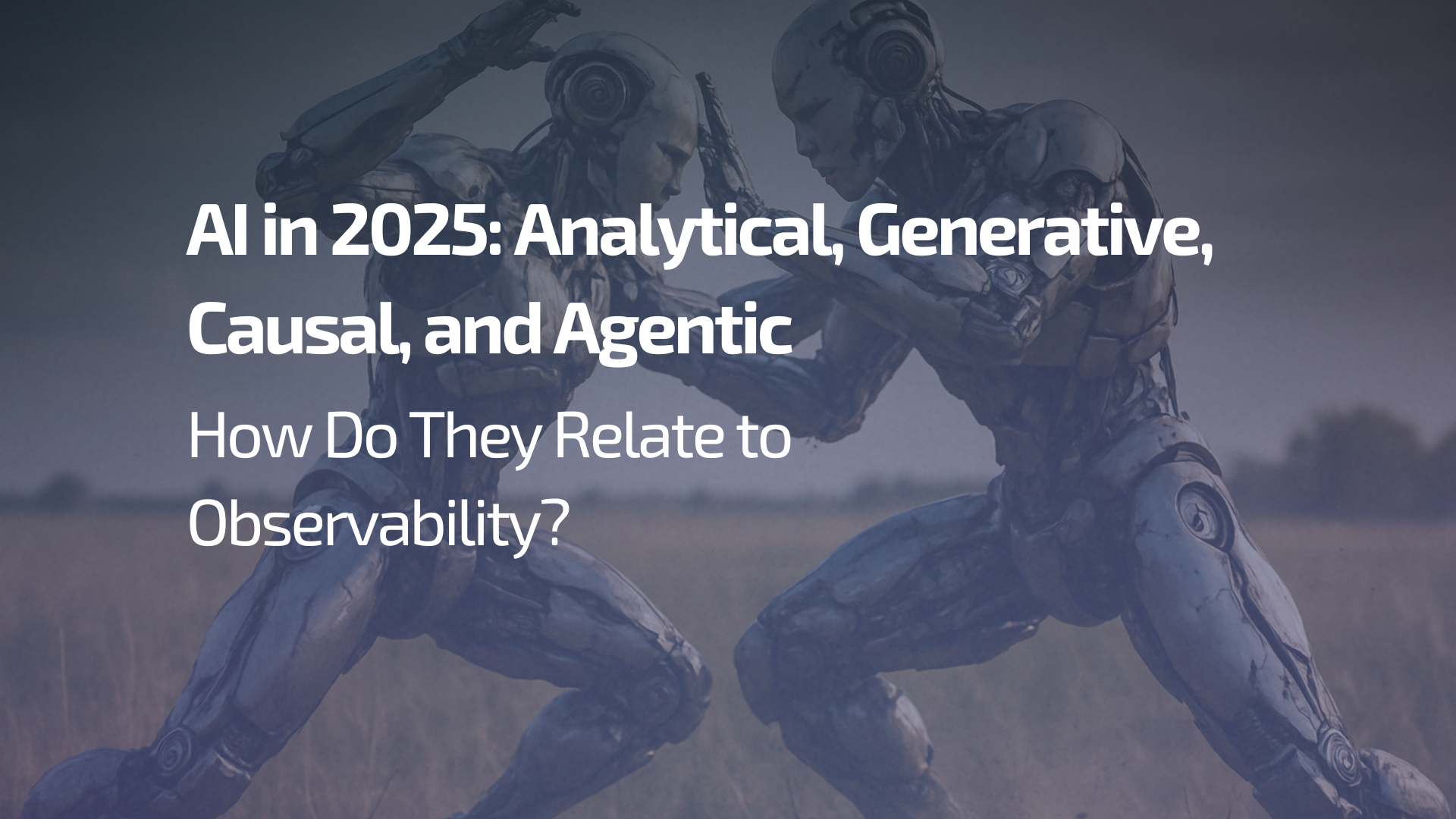
Artificial intelligence is surrounded by massive hype: generative chatbots and image generators have become everyday tools, while „Agentic AI” is emerging as the next big promise. But the hype often raises more questions than it answers. What do these concepts actually mean? How do the different AI types compare, and why is it critical for enterprises to understand them clearly?
In this article, we define the main AI types and highlight why unified observability is essential for organizations that already use AI or plan to adopt it in the future.
Where does the AI hype stand today?
Artificial intelligence has become a central element of technology strategies. The release of ChatGPT in 2022 marked a turning point and quickly became a constant topic in boardroom discussions. Generative AI tools now assist in content creation, coding, and data analysis, while enterprises across industries race to adopt AI-driven solutions.
According to the Dynatrace The State of AI 2024 report, 83% of technology leaders believe AI is now essential to keep pace with the dynamic changes of cloud-native systems. Expectations are high: faster development, proactive issue prevention, improved security, and better user experience. At the same time, the survey also found that nearly every organization is concerned about AI-related risks: bias, inaccurate responses, compliance challenges, and data leakage all rank as serious issues.
The takeaway: while the hype continues, the initial rush is giving way to a more measured approach. Organizations are increasingly focused on long-term value and risk management.
Our advice: keep innovating, but ensure clarity. A good starting point is understanding the main AI types – the opportunities they open and the risks they carry.
What are the main AI types?
1. Analytical (Predictive) AI
- Key capabilities: Learns from data, makes predictions, and uncovers correlations.
- Examples:
- Spotify / YouTube recommendations: predicting what music users will want to hear next.
- Google Maps / Waze: forecasting traffic jams and suggesting faster alternative routes based on past and real-time data.
Banking: JPMorgan uses predictive AI in fraud detection to flag suspicious transactions in real time.- Microsoft Azure AI: predictive services in FinOps help optimize multicloud costs.
- Spotify / YouTube recommendations: predicting what music users will want to hear next.
2. Generative AI
- Key capabilities: Creates new content: text, images, code, or multimodal outputs.
- Examples:
- OpenAI ChatGPT-5 and Google Gemini Ultra: generating text, code, and images.
- TikTok and Instagram: automatic subtitles or background music suggestions for videos.
- Sora and Veo 3: text-to-video tools that enable users to generate entire videos without technical expertise.
- OpenAI ChatGPT-5 and Google Gemini Ultra: generating text, code, and images.
3. Causal AI
- Key capabilities: Goes beyond statistical correlation to uncover true cause-and-effect relationships.
- Example:
- The causal reasoning layer of the Dynatrace Davis® AI engine not only identifies the root cause of incidents but also analyzes the impact on business processes.
4. Agentic AI
- Key capabilities: Acts autonomously: sets goals, creates plans, and executes decisions.
- Examples:
- Salesforce Einstein GPT Agents: automatically manage entire customer service workflows from incoming query to ticket resolution.
- Amazon Bedrock + LangChain agents: proactively manage cloud infrastructure, scaling, and incident resolution without human intervention.
- Dynatrace autonomous agents: detect a capacity issue, assess the impact of seasonal load, evaluate business risks, reconfigure the cloud environment, and generate an IT operations report automatically.
- Salesforce Einstein GPT Agents: automatically manage entire customer service workflows from incoming query to ticket resolution.
5. Composite AI
- Key capabilities: Combines multiple AI types (predictive, generative, causal, agentic) in a single system.
- Examples (2025):
- Dynatrace platform: predictive issue prevention + generative AI queries + causal analysis + agentic automation.
- SAP Business AI 2025: predictive models for financial forecasting, generative text for reports, causal analysis for decision support, and agentic modules for execution.
- Dynatrace platform: predictive issue prevention + generative AI queries + causal analysis + agentic automation.
What business risks does AI introduce?
1. Inaccuracy and bias
- Generative models can hallucinate, producing factually incorrect answers.
- Biases in training data can skew AI-driven decisions.
2. Data security and compliance
- Without proper controls, sensitive data may leak.
- Compliance frameworks (GDPR, NIS2, DORA) demand transparency and documented processes.
3. Runaway costs and loss of control
- Running LLMs and agentic systems is resource-intensive. Without observability, costs can quickly spiral.
- Autonomous AI agents may take actions misaligned with business priorities if no governance framework is in place.
How can risks be mitigated?
“At Dynatrace, we believe agentic AI is only as reliable as the foundation it runs on. “
Secure, trustworthy operation requires three key elements:
- Knowledge: Real-time, context-rich data – not just generic LLM output, but structured information from the enterprise’s own environment.
- Reasoning: A combination of causal, predictive, and generative AI ensures accurate, bias-free decisions.
- Actioning: Automated execution based on high-level goals – auto-remediation, auto-optimization, and auto-protection.

This framework helps AI operations work not as a “black box,” but as a more transparent, verifiable, and business-aligned system.
Conclusion
The winners of the future will not be those who blindly follow the AI hype, but those who understand when and how to use each AI type – and who manage them with unified observability.
Telvice Zrt. partners with organizations aiming to achieve more transparent and efficient IT operations – the foundation for secure AI adoption. Contact us for a free consultation.
Sources:
https://www.dynatrace.com/resources/ebooks/the-state-of-ai-2024 https://dataguy.in/artificial-intelligence/ai-types-analytical-generative-agentic-explained
https://www.dynatrace.com/news/blog/shaping-the-future-autonomous-intelligencehttps://www.tatvic.com/blog/agentic-ai-vs-generative-ai-in-2025-definitions-use-cases-and-key-differences https://www.businessinsider.com/generative-ai-evolution-software-companies-develop-ai-agents-workforce-2025-3
https://www.ft.com/content/3e862e23-6e2c-4670-a68c-e204379fe01f
